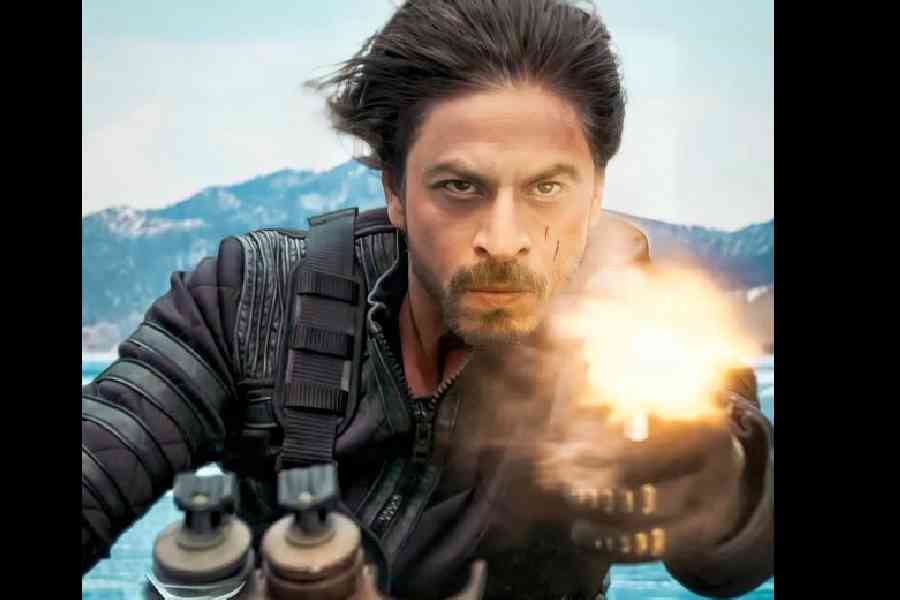Over the last few years, Bollywood has seen a rise in spectacle films. Using visual effects that come close to and can sometimes even challenge Hollywood, quite a few of these films belong to production giant Yash Raj Films (YRF), courtesy of its superhit YRF Spy Universe.
t2 caught up with Sherry Bharda, head of yFX, the visual effects arm of YRF, who has had a long and illustrious career bringing to life films from Lagaan to Pathaan, to talk about VFX then and now and the way forward.
What would you cite as the biggest achievements of yFX over the last few years?
We are pushing the envelope with each project. We have a very passionate team and we are figuring out ways to get more efficient and smarter. We are not the kind of company that scales up to deal with more complicated projects. We are using processes like AI machine learning, which leaves us with time to focus on the more creative aspects of the job. That allows us to make the VFX process more inclusive for our filmmakers and bring in planning at an early stage.
Courtesy of the YRF Spy Universe, we have seen a lot of spectacle films come out of your stable in the last few years. Would you say that action-oriented, larger-than-life films are your core strength?
It is a strength that derives from being a part of Yash Raj Films. It is a collaborative effort across all creative departments, otherwise we wouldn't have been able to do justice to the incredible vision of these big blockbusters.
Which has been the most complex film that yFX has worked on in recent times?
That would be Pathaan. Given the fact that it was a pandemic production, it had a very aggressive timeline and a huge number of shots to deliver. The film threw into VFX the things that were originally planned to be live and so there was an immense amount of world-building and entire environments that had to be built into the film.
It was a very complex production but also a very aggressive one. It had to be built from scratch, right from Dubai city to the canyon for the Tiger and Pathaan sequence (in the train). There was a lot of high-octane action and so it had to be bigger, higher and more dangerous looking.
The build was massive and it had to be done as an iterative process. For example, the train travelling through the canyon had to look like it was super fast to make the action on the top of the train look death-defying. That meant that we had to steepen the gorge, increase the height and build more of the terrain so that the train could move faster. The building up of that asset was very complex and we put in a lot of time on getting that right because we knew if we got that, the rest of it would fall into place. It was a three-month build in a nine-month production. Even making Dubai city was a huge challenge. It is a city of huge buildings and matching back to what had already been shot was tough.
The train sequence was truly spectacular and not just because of the Tiger-Pathaan/ Shah Rukh Khan-Salman Khan jugalbandi...
If we had depended on a live location for that sequence, we wouldn't have been able to achieve those over-the-top moments of speed and action. Building that entire environment as a digital model allowed us to take this to the next step and that is what the audience appreciated. It was long, it was fast and it looked grand.
You will be unveiling a virtual production lab at YRF this year, the first of its kind in India. Tell us about it.
Virtual production is a broad term. It encompasses computer-aided production and visualisation. Visualisation is what most filmmakers are familiar with. It is prototype imagery created to convey the intent of a shot or a sequence. It can take the form of previz (pre-visualisation, meaning the visualising of scenes or sequences in a movie before filming), a virtual scout (that gives filmmakers new ways to navigate and interact in virtual production environments) and a tech viz (tech-visualisation, which is the use of 3D assets to perform technical analysis on scenes). A lot of studios are using virtual production, from previz to scouting and LED volumes, and we felt that the use of virtual production by filmmakers can far exceed its current usage and massive benefits and economies of scale can be reaped from virtual production at the studio production level.
That means that directors can have iterations on processes to see early mockups of what they intend to shoot eventually. This also means that it is a shared or aligned vision of all the heads of departments.
When one already has a vision and a plan in place, then there is no cascading effect into a post-fix-it and an overrun in post-production time. Therefore, when you come to set, it is only the execution of a planned vision. This is the purpose of this lab, as we call it. In the truest sense of the word, it is a lab where we can do this kind of prototype imagery earlier on.
How would you analyse the strengths, weaknesses, opportunities and threats of yFX?
Being part of Yash Raj Films gives us early visibility on the project. So ideation and collaboration with the HODs give us the best place to be at that table to find efficient solutions because this is a place where we are brainstorming and ideating.
What could be a perceived weakness is our small size against the massive projects we undertake. But that translates into us being more flexible. Our strength is our ability to think on the spot, pivot and execute as a team.
Opportunities are many. Being part of YRF means we can try out new methodologies and workflow technologies. There is a trust factor that allows filmmakers to try new processes and to be guided by yFX. Given this early interaction, our production teams can accurately estimate cost efficiencies, shoot plans, scheduling... how much they need to build on set, where do they need to execute.... They can focus on things like: 'Do I need to build this 100-ft structure? Can I build 20-ft and hand over the rest to VFX? Which is more cost-effective?' These are opportunities that only come if you are working very closely with the production teams.
I will use the word 'threat' as a challenge. It is to stay current. We are a completely indigenous studio and have to design our own technology process, workflow and pipeline. In an industry which is growing so rapidly, everything can be redundant every few months. We have to stay at the top of our game and raise the bar as it were.
How do you feel VFX has evolved in Indian cinema, particularly in Bollywood, over the last few years? There has been a proliferation of spectacle films...
Maybe I am being a little dramatic but I think we are witnessing some sort of renaissance in VFX in our country. There is implementation of good practice, better budget and understanding. VFX can enhance or augment visuals and it can bring scale and impossible action to the screen. But using VFX correctly has been a challenge, in part because of a limited understanding of its use. But over this decade, it has improved tremendously.
What has been bigger than that is the democratisation of VFX. It has always been used in advertising but now it is being used in everything from small-budget web shows to the biggest films possible. That means people are understanding the benefits and the power of VFX if used correctly.
Congratulations on being invited to be part of the Academy Awards panel. What does that mean for you and yFX?
This is a forum of top global talent and for me, it is an opportunity to see how other regions are using VFX in their stories and films as well as assessing their unique challenges and solutions. It gives us exposure to new technology and new creative ideas. It helps raise the bar on our craft across the board.
What are yFX's goals over the next few years?
We are only as good as our last project. So the goal is always to get better on the next one. We have a roadmap on the immediate horizon with our next chapters of the Spy Universe. But from a more studio-growth perspective, we want the virtual art department to take centre stage now. We will focus on all our projects being pre-production-focused to help filmmakers realise their creative vision earlier to make it a more iterative and collaborative process and to reduce dependency on VFX as a post-fix-it department. We need to integrate it from the beginning.
Priyanka Roy










